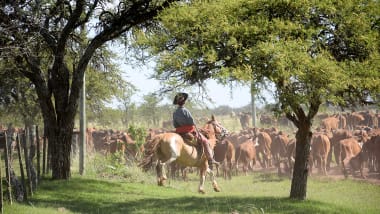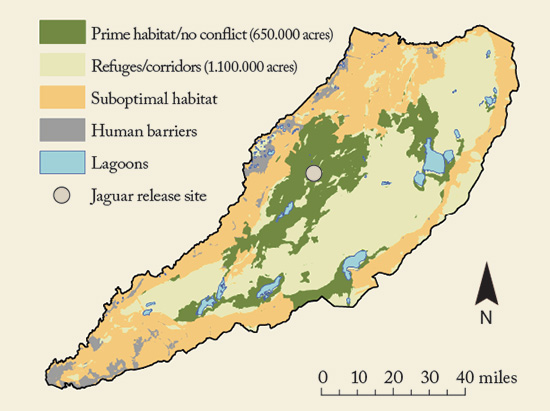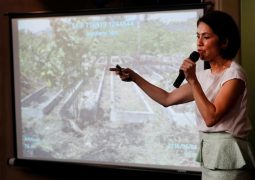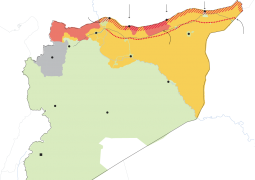Inside one of the world’s newest (and wettest!) national parks

Mark Johanson
Iberá National Park: One of the newest national parks in the Americas and the world’s second-largest wetland, Iberá is home to 4,000 species of flora and fauna, including this jaguar.
Rafael Abuin
Corrientes, Argentina (CNN) — If the Everglades and the Serengeti had a child together, it might look a bit like the Iberá Wetlands of northeastern Argentina.
Some 1.8 million years ago, the Paraná River — South America’s second-longest after the Amazon — carved a rambling path through Argentina’s Corrientes Province before shifting to its modern location farther west, scientists believe.
The massive freshwater basin that remained became the world’s second-largest wetland, harboring some 4,000 species of flora and fauna — almost 30% of Argentina’s total.
Largest protected area in Argentina at 1.76-million acres, when combined with the surrounding Iberá Provincial Park.
Now, international visitors have figured out that there’s a watery labyrinth of swamps, bogs and floating islands in northern Argentina ripe for safari-style adventures.
To explore this remote region is to enter into a vast grassland that’s been carved out like a block of Swiss cheese by 75 shallow lagoons. Hidden within is everything from mud-crunching marsh deer to howling monkeys, sunbathing caimans and the world’s largest rodent (the capybara).
Mayer says that, despite the recent buzz, the wildlife-rich park still receives only a small number of visitors, “but that´s the main reason why the local culture is so authentic and the fauna so vigorous.”
The birth of a new national park
Much of the Fernández Lagoon is covered in floating reed islands.
Mark Johanson
Set up by former Patagonia CEO and American conservationist Kris Tompkins and her late husband Doug (co-founder of The North Face), the organization works in Argentina to create national parks that can combat biodiversity loss. The Tompkins have also been the driving force behind 10 million acres of new national parkland in neighboring Chile.

Iberá National Park was a project two decades in the making. It stems from 395,000 acres of former cattle ranches and rice farms that the couple purchased, restored and then donated to the federal government to ensure its long-term protection.
Kris Tompkins, who spends several months of each year living in the park, modeled it on American national parks, with atmospheric lodges built of natural materials, well-signed hiking paths and myriad educational opportunities.

The lodge, which is located on an old estancia (cattle ranch) dating to 1896, has a heady National Geographic vibe. Huge animal photos hang on walls in thick wooden frames while brick-like tomes on sustainability, wildlife and conservation turn every corner into a reading room.
Visitors can hike around a caiman-filled lagoon just steps from the lodge or race rheas (ostrich-like roadrunners) on mountain bikes down the red-dirt roads that bisect nearby grasslands. They’re also treated to lectures on local biodiversity, regional conservation efforts and the importance of parklands.
Rewilding Experience runs a more budget-friendly lodge along the edge of the Fernández Lagoon (the best waterway for kayaking), as well as a rental home called Estancia Iberá near the Iberá Lagoon (which is better for boat trips).
As the name implies, the goal of visits to each of these properties is to become entrenched in the newly flourishing wildlife, much of which has been “rewilded” and is now habituated to the presence of non-threatening humans.
The return of the animals
A dedicated jaguar center will release as many as five jaguars back into the wild in 2020.
Rafael Abuin
“Rewilding” is the effort to restore natural processes and reintroduce missing species to an environment, and Iberá is the site of the largest and most ambitious rewilding project currently underway in the Americas.
Five locally extinct or endangered native species — including the giant anteater, green-winged macaw and pampas deer — have been reintroduced here since the project began in 2007. In early 2020, the project will enter its next phase with the release of as many as five jaguars into the wild.
“For an ecosystem to function properly, the apex predators (animals at the top of the food chain) need to be present,” says Rafael Abuin, the project’s communications director.
A dedicated jaguar reintroduction center opened in 2015 on San Alonso, an isolated island within the park, and it currently holds seven cats.
The older cats, who’ve come from zoos, can’t safely be released back into the wild. But their babies (two were born here in 2018) will join young orphans donated from Brazil as the first big cats to roam these lands in nearly a century.
Abuin believes that this will be a game-changer for both restoring the ecological balance and kick-starting a greater eco-tourism industry that can boost the rural economy.
“From South Africa to India, what moves money in wildlife tourism is the chance to see a big cat,” he says, adding that Iberá “has the potential to become the best destination in the world to see a jaguar in the wild.”
Watch out for caimans and piranhas
Boats depart from Carlos Pellegrini for tours of the Iberá Lagoon.
Mark Johanson
While the Tompkins name may loom large over Iberá, tourism here began in earnest three decades ago with the town of Colonia Carlos Pellegrini (population 900). It was here, thanks to the efforts of local authorities creating a new provincial park, that pelt hunters traded their weapons for binoculars and embarked on a new life as rangers and wildlife guides.
To this day, Carlos Pellegrini has the most developed tourism industry in the wetlands with a handful of locally run inns, campgrounds, restaurants and shops that sell artisan goods, including wood-carved animals and handwoven baskets. Adventure outfits in town offer either hiking, kayaking or boat tours to the floating reed islands within the Iberá Lagoon.
The indigenous Guaraní used to navigate Iberá’s lagoons in pole-driven canoes. Modern operators have added motors to the equation, but still use poles to push in and out of the shallower edges. That’s because the lagoons only drop to a maximum depth of about 10 feet, depending on rain levels.
Trails accessible from Carlos Pellegrini include Sendero de los Lapachos, which passes through a forest frequented by howler monkeys, and Sendero Paso Claro, which offers the shade of the region’s signature caranday palm trees.
All paths skirt the Iberá Lagoon, which is home to enough caimans and piranhas (as well as local legends of hunters going missing) to make you think twice about taking a dip.
How to get there
Most towns on the edge of the Iberá Wetlands have a strong gaucho culture.
Mark Johanson
Interest stirred by the new national park has led many other communities situated at the portals to Iberá (entrances lie off a ring road that circles the wetlands) to begin diversifying from agriculture into tourism.
Portal Cambyretá has added campgrounds and short trails to view the newly reintroduced green-winged macaws. Meanwhile, the colonial-style village of Concepción (near Portal Carambola) now offers stylish lodging options, as well as gaucho-style horseback riding and horse-drawn boat trips deep into the wetlands.
Accessibility remains an issue no matter where you sleep. The closest airports to Iberá are in the regional capitals of Posadas (to the northeast) or Corrientes (to the northwest), which can be more than four hours away, depending on the destination.
Many visitors opt for the luxurious (by overland standards) sleeper bus from Buenos Aires to the city of Mercedes, south of the park, where onward connections can be arranged to Carlos Pellegrini or the three Rewilding Experience properties.
Mark Jphanson is a freelance journalist based in Santiago, Chile. His writing has appeared in Lonely Planet, Men’s Journal, GQ, Newsweek and The Guardian, among others. You can follow him on all social channels @MarkontheMap.
- Previous Malaysia on high alert for Wuhan coronavirus
- Next Ukrainian jet victim ran company suspected by UN of violating Libyan arms embargo















